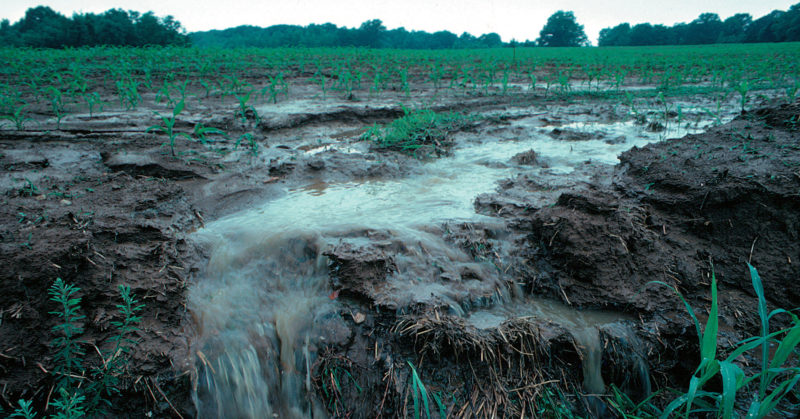PRESS RELEASE
Contact: Robert Hirschfeld, Prairie Rivers Network, rhirschfeld@prairierivers.org, (217) 417-3302 (cell)
Water Pollution from Agriculture in Illinois Continues to Increase, According to New State Report
Prairie Rivers Network Calls for Honesty from State Officials, Accountability for Polluters
CHAMPAIGN – Today, the Illinois Environmental Protection Agency (IEPA) and Illinois Department of Agriculture (IDOA) released the fourth Biennial Report of the Illinois Nutrient Loss Reduction Strategy (NLRS), which reveals that the state has failed to make progress on its goals to reduce nutrient pollution, as pollution from agricultural runoff continues to increase. Not only is the NLRS failing to meet its goals to reduce nutrient pollution, but the report and the state agencies in charge of it fail to honestly and accurately convey to the people of Illinois the scope and scale of the Strategy’s failure to protect the state’s water from harmful agricultural pollution, nitrates, and worsening water quality.
The goal of the NLRS is to reduce the rates of nitrogen and phosphorus loading in our rivers and streams by 45%. As the report shows, Illinois is far from reaching that goal. In fact, the amount of nutrient pollution has actually increased as compared to the 1980-1996 baseline.

“The five-year average from 2017-21 shows nitrogen loads increased by 4.8% to 416 million pounds annually and total phosphorus loads increased by 35% to 46 million pounds annually, when compared to the 1980-96 baseline.” (IDOA and IEPA. 2023)
This overall increase in pollution occurred despite the fact that there was a 34% decrease in phosphorus and a 12% decrease in nitrogen from point sources such as municipal and industrial wastewater facilities, indicating that non-point agricultural runoff has dramatically increased and is thus driving the net increase in nutrient pollution. Notably, pollution from point sources is regulated and limited, while agricultural pollution is largely unregulated.
“It is appalling that IDOA Director Jerry Costello would look at these results and then claim the report ‘showcases the commitment of the agriculture industry to be good stewards of the land,’ as he claims in the state’s press release,” said Robert Hirschfeld, Director of Water Policy at Prairie Rivers Network. “What the report shows is that Illinois has a terrible problem with agricultural pollution, and Director Costello’s quote shows that our state’s leaders, particularly in the agricultural sector, are unwilling to face reality and unable to tell the truth to the people of Illinois.”
Excessive levels of nitrogen and phosphorus in our streams and rivers can cause excessive algae growth, lower oxygen levels in the water, endanger aquatic life in Illinois rivers and in the Gulf Dead Zone, and contribute to unhealthy drinking water in Illinois communities. Worse still, the IEPA, the IDOA, and state government have failed to take public health and environmental concerns seriously. Often, it is low-income and vulnerable communities that bear the brunt of water pollution. Under-resourced communities have been forced to spend millions to address water pollution problems not of their own making (and often caused by a multi-billion dollar industry). Yet the state continues to go to bat for the agriculture industry, rather than the people.
IEPA and IDOA’s rosy assessment of the state of Illinois’ water quality flies in the face of the grim reality of Illinois’ water crisis. Of the stream miles assessed in IEPA’s last Integrated Water Quality Report from 2022, 40% of Illinois were too polluted to support aquatic life and 85% were too polluted to support swimming or direct human contact. And fully 100% of stream miles assessed were too polluted to support fish consumption.
“The state of Illinois’ current strategy to reduce agricultural pollution is failing,” said Hirschfeld. “It is failing because the state refuses to consider regulating agriculture pollution in the way pollution from other industries is regulated. State officials and the agriculture industry insist on a ‘voluntary’ approach to pollution reduction, which is better described as the public paying individual farmers to reduce their pollution, rather than requiring them to reduce it. The people of Illinois deserve the truth, that this strategy is failing to accomplish much beyond spending their money. Yet, the new report muddies the truth, calling it a success to simply spend money while our water pollution problem gets worse.”
“In Illinois, when it comes to agriculture, we don’t make the polluter pay, we pay the polluter,” said Hirschfeld. “The agriculture industry in this state is so powerful that they believe they can pollute the public’s water without consequence or accountability. And to this point, they haven’t been wrong. That has to change. The people of Illinois should take this new report as a wake up call. We need to demand clean water. We need to demand honesty from state agencies. We need to demand that the state hold polluters accountable.”
At Prairie Rivers Network, we protect water, heal land, and inspire change. Using the creative power of science, law, and collective action, we protect and restore our rivers, return healthy soils and diverse wildlife to our lands, and transform how we care for the earth and for each other. PRN is the Illinois affiliate of the National Wildlife Federation.
###







